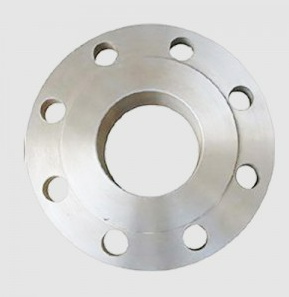Plate flange is an important part of the pipeline system and plays a vital role in the connection of pipelines, valves and other equipment. Understanding how plate flange work is important to ensure the efficiency and safety of your piping system. In this blog, we will take an in-depth look at the functions of plate flanges and their significance in various industrial applications.
Plate flanges are flat discs with evenly spaced bolt holes for connection to other flanges or equipment. They are commonly used in piping systems to provide support, strength and leak-proof connections between pipes or valves. The main function of plate flanges is to facilitate the assembly and disassembly of pipe components while maintaining a secure and sealed connection.
One of the key aspects of how plate flanges work is their ability to distribute mechanical loads and stresses across the flange, ensuring that the connection remains stable and leak-free. When two plate flanges are bolted together with a gasket between them, they create a tight seal that prevents fluid or gas from escaping the piping system. This is particularly important in industries such as oil and gas, chemical processing and water treatment, where leaks can cause environmental hazards and safety risks.
Plate flanges are available in various sizes and materials to meet different piping requirements. They are typically made from carbon steel, stainless steel, or other alloys, depending on the specific application and environmental conditions. Material selection is critical in determining the flange’s resistance to corrosion, pressure and temperature, thereby ensuring its long-term reliability in the piping system.

In addition to their sealing function, plate flanges provide a convenient method for aligning and joining pipes of different sizes and materials. By using a combination of plate flanges, gaskets and bolts, piping systems can be easily modified or expanded without the need for extensive welding or fabrication. This flexibility is especially beneficial in industries that require frequent modifications or maintenance.
Another important aspect of how plate flanges work is their ability to withstand high pressures and temperatures. In applications where piping systems are subjected to extreme conditions, such as power plants or chemical plants, the integrity of flange connections is critical. Plate flanges are designed to industry standards and specifications, ensuring they can withstand harsh operating environments.
In summary, plate flanges play a vital role in the functionality and reliability of piping systems. Their ability to provide secure, leak-proof connections, accommodate different pipe sizes, and withstand high pressures and temperatures makes them indispensable in a variety of industrial applications. Understanding how plate flanges work is critical for engineers, designers and maintenance personnel to ensure efficient and safe operation of piping systems. By selecting the appropriate plate flange and following best practices for installation and maintenance, you can maintain the integrity and performance of your piping system for years to come.
Media Contact
Company Name: Tianjin Grand Construction Machinery Technology Co, Ltd.
Email: Send Email
Phone: +86-13552079723
Address:No.1, Yanmen Road, Hebei District
City: Tianjin
Country: China
Website: https://www.grandpipefitting.com/













